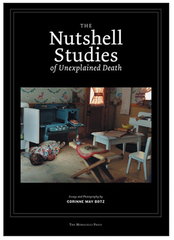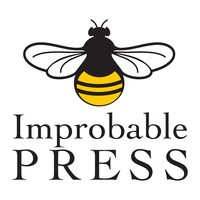By Narrelle M Harris
Improbable Press' Atlin Merrick and Lee Harper, creator of the History Bones dioramas, are collaborating on a book for Clan Destine Press.
One of the subjects in the book is the 'mother of modern forensics' and fellow-diorama-maker, Frances Glessner Lee, whose miniature crime scenes are still used to train Baltimore police detectives. Here, I review a fascinating book about the 'nutshell studies' and their creator.
Book Review: The Nutshell Studies of Unexplained Death
 I first saw Corinne May Botz’s book at the Morbid Anatomy Museum in New York. It is a collection of art photos taken of Frances Glessner Lee’s dollhouse recreations of murder scenes.
I first saw Corinne May Botz’s book at the Morbid Anatomy Museum in New York. It is a collection of art photos taken of Frances Glessner Lee’s dollhouse recreations of murder scenes.
The dioramas were not merely macabre toys put together by a fan of true crime. Lee painstakingly created the scenarios in the 1940s and 50s for a very serious purpose: training investigating police on the correct scientific methods of approaching crime scenes, observing all details which may bear on the case.
At the time, medical law was still very much a work in progress—murders often passed undetected or badly investigated. Frances Glessner Lee, a Chicago heiress, founded Harvard’s Department of Legal Medicine and built these gruesome displays of domestic murder, mishap, and accidental death to train police in observation. The models are still in use today by the Baltimore Police.
An astonishing level of detail went into their creation. Lee sometimes wore clothes for a year past their effective use-by date so they’d have the correct wear for the tiny figures in their boxes. She ordered parts, she disassembled and reworked and reconstructed them. She had pieces made from scratch. There are tiny calendars and books, miniature tools and household implements, medically accurate colouring (bright red skin for victims of carbon monoxide poisoning) and domestic details recreated to scale. Many of the scenarios were based on real cases, altered and expanded slightly to fit their purpose as training materials.
The Studies taught generations of investigative officers how to keep their eyes open, to look for corroborating evidence and to seek out contradictory clues.
A Woman with a Will: Frances Glessner Lee
The Nutshell Studies—so named for the old saying that the role of forensics is to “convict the guilty, clear the innocent, and find the truth in a nutshell”—have multiple aspects to them.
There is the story of an intelligent, strong-willed woman who was denied a university education because that was not appropriate for women (according to her father), but forged a valuable role for herself anyway.
There is the story of policing and detective work.
There is a wealthy woman’s philanthropic role in promoting the ways in which the law and medicine interacted (in early years, coroners didn’t have to have medical expertise at all—some were elected to the position and were pretty much useless for the purpose of autopsies and crime solving).
There is one photographer’s growing obsession with the dollhouses not only as social and investigative artefacts, but as artistic ones too. Botz’s book is an artistic interpretation of the training tableaus, beginning with observations on Lee’s life and how it influenced her work in an artistic and social rather than strictly crime-solving sense. A biography of Lee criss-crosses the social, feminist, investigative and artisan elements of the work before the rest of the book highlights some of the studies.
The point of this book is not a whodunnit for the reader to solve—most of the scenarios remain unexplained because they’re still in use—but the biography and the photographs together provide an insight for the fiction and true crime writer, as well as the reader who is fascinated by the strange and macabre and by the history of detective work. They are also strangely, brutally beautiful in the way they capture the hard lives and everyday tragedy of death, and the remarkable detail that went into making them.
